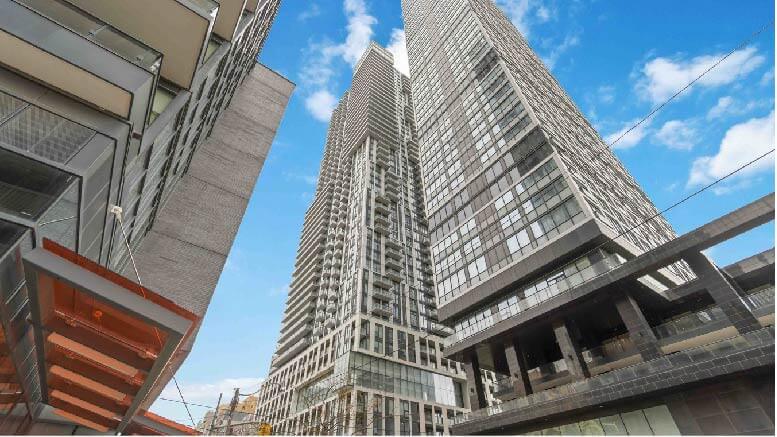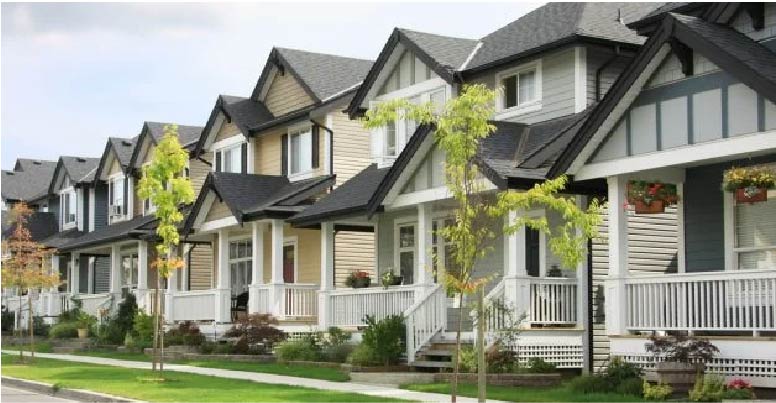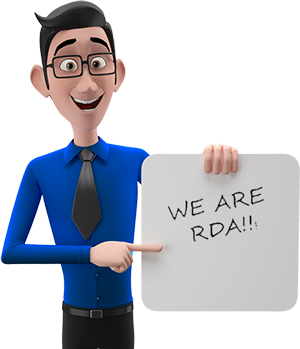HOA board meetings are essential to maintaining a cohesive and responsive community. Conducted effectively, these meetings not only address community needs but also foster a collaborative atmosphere that can unite diverse viewpoints. With community matters often requiring timely and inclusive decisions, understanding the nuances of various meeting structures can establish a solid foundation for productive discussions.
HOA board meetings serve multiple purposes, ranging from regular maintenance updates to urgent issue resolutions. A well-organized meeting encourages clear communication, respects established protocols, and ensures all board members and residents feel heard. Implementing structured strategies, such as setting clear agendas and utilizing technology, can elevate participation and minimize potential conflicts.
This article delves into practical strategies for improving collaboration in HOA board meetings, focusing on best practices like adhering to governing documents, creating engaging agendas, and promoting inclusivity. By incorporating these approaches, HOA boards can enhance meeting productivity and cultivate a more harmonious community environment.
Homeowners Association (HOA) board meetings serve as a cornerstone for association-related discussions, decision-making, and community engagement. Different types of HOA meetings cater to various aspects of association governance and require adherence to specific formats and procedures. These meetings typically fall into categories such as standard (regular) board meetings, annual meetings, executive sessions, committee meetings, and, when necessary, emergency meetings. Each meeting type bears its distinct purpose, notice requirements, and opportunities for member involvement. By understanding the nuances of HOA board meetings, members and directors can ensure they meet legal requirements and promote effective community management.
Standard Meetings
Standard board meetings are the regular pulse of an HOA, set forth by the association’s bylaws. They are most often scheduled monthly or bi-monthly, though the exact frequency is dictated by the community’s needs and governance documents. A firm agenda is paramount for these meetings, structured to streamline the discussion and expedite decision-making. Attendance is predicated on meeting the stated quorum, which is crucial to legitimize any decisions made. Regular meetings are the venue where homeowners can engage directly with the board, sharing their feedback and concerns, thus fostering an environment that values structured communication and transparency.
Annual Meetings
Annual meetings hold significant importance in the cycle of HOA governance activities, as they address broader community issues, financial matters, and board elections. These meetings happen once a year, with residents often benefiting from an overview of the community’s well-being delivered by the board. Primary actions taken during annual meetings include presenting the annual budget and voting for board member positions. To comply with governance requirements, the HOA is required to give members at least 30 days’ notice, with minutes recorded and disseminated post-meeting. This annual congregation is instrumental in upholding the values of transparency and active communication between residents and their elected representatives.
Executive Sessions
Executive sessions are designated for private discussion of sensitive matters by the board, away from the public eye. These conversations may cover legal issues, confidential personnel issues, or address individual resident’s personal issues, and are held in conjunction with or separate from regular board meetings. Attendance is typically exclusive to board members, although occasionally specific parties, such as management companies or attorneys, may be invited for their expertise on the confidential topics at hand. These sessions ensure that discussions on delicate matters can be approached candidly while conforming to any applicable state laws or HOA bylaws. The confidential nature of these meetings also necessitates that minutes, if taken, are not openly distributed.
Committee Meetings
Committee meetings are an extension of the HOA, often focusing on specific areas like landscaping, architecture, or social events. These meetings, which should be open to all community members, provide a platform for residents to volunteer and contribute to the enhancement of the association. Frequency and notice of committee meetings adhere to the HOA’s rules, ensuring all members can contribute to the discussions. Minutes are kept by a designated committee member to create an official record of proceedings, fostering transparency and maintaining accountability for decisions reached within the committee.
Emergency Meetings
Emergency meetings, also known as special meetings, are convened to address urgent issues that cannot wait for the next regular meeting. The necessity of emergency meetings arises from unforeseen events like natural disasters or other crises that mandate prompt decision-making. In such time-sensitive situations, standard notice requirements may be waived to expedite action. Authorized by the HOA president or at least two board members, these meetings can occur through various communications channels to quickly resolve pressing community challenges. Despite the short notice, minutes should be recorded for these meetings to maintain a record of the actions taken, preserving the HOA’s commitment to accountability.
Importance of Board Meeting Protocols and Guidelines
Board meetings are a cornerstone of effective Homeowners Association (HOA) governance. Recognizing the importance of meeting protocols and guidelines ensures these assemblies serve their intended purpose. Essential to the functionality of board meetings is understanding quorum requirements; without the minimum number of members present, the meeting cannot proceed, leaving decisions in limbo.
A well-organized agenda is the backbone of an efficient meeting. It streamlines focus towards critical voting points and necessary discussions, minimizing diversions. Regular attendance is not only a duty of board members but a commitment to making informed choices for the community’s benefit.
Structured guidelines promote a respectful and orderly environment, preventing individual domination and encouraging a balanced exchange of ideas. Ensuring meetings are not treated as open forums is vital; they should provide a platform for homeowners’ input without disrupting the prescribed agenda flow.
Below is a brief outline that encapsulates these protocols:
- Ensure a quorum before proceeding.
- Follow a structured agenda to guide discussions.
- Encourage regular member attendance for informed decision-making.
- Implement meeting guidelines for decorum.
- Balance homeowner participation with the established meeting flow.
By adhering to these principles, HOA board meetings can fulfill their role as an official record of decisive, collective action.
Creating a Well-Organized Agenda
Creating a well-organized agenda is fundamental to the effectiveness of an HOA board meeting. It serves as the framework for the meeting, keeping discussions on track and making sure vital topics receive the necessary attention. Key elements of an effective agenda include:
- Call to Order: This officially starts the meeting.
- Roll Call: Essential to establish quorum.
- Approval of Previous Meeting Minutes: To confirm the official record is accurate.
- Action Items: A focus on decisions or steps that require board approval or action.
- Homeowner Input: A designated time for residents to voice their concerns or opinions.
Each agenda item should have a specific time allotment, ensuring the entire meeting progresses efficiently. For instance:
|
Agenda Item
|
Time Allotment
|
|
Call to Order
|
5 minutes
|
|
Roll Call
|
3 minutes
|
|
Approval of Previous Minutes
|
10 minutes
|
|
Action Items
|
30 minutes
|
|
Homeowner Input
|
15 minutes
|
Distributing the agenda days in advance permits board members and residents to review and prepare, contributing to a focused and participatory meeting atmosphere. Short, accessible paragraphs summarizing each agenda section aid in clarity and quick reference during the meeting itself.
Adhering to Governing Documents
Adhering to the governing documents is a critical aspect of holding proper Homeowners Association (HOA) board meetings. State laws, along with these documents—which include articles of incorporation, declarations of Covenants, Conditions, and Restrictions (CC&Rs), bylaws, and other rules—outline the requisites for annual and special meeting protocols.
To ensure meetings are not only effective but also compliant, board members and homeowners should be thoroughly versed in these guidelines. These documents often prescribe adherence to certain parliamentary procedures, such as Robert’s Rules of Order. Following them helps maintain a structured environment where everyone understands the flow of the meeting and their role within it.
It is equally important to communicate procedural rules well ahead of the meeting. Providing clear reminders about HOA’s expectations sets a professional tone and facilitates homeowner participation. Proper communication could include distributing the meeting agenda and governing documents several days in advance to all concerned parties, ensuring ample preparation.
By keeping paragraphs concise and information clear, homeowners and board members alike can follow along easily, leading to more efficient and harmonious meetings.
|
Governing Document
|
Purpose
|
|
State Laws
|
Define legal framework
|
|
Articles of Incorporation
|
Establish the HOA
|
|
CC&Rs
|
Outline rights and responsibilities
|
|
Bylaws
|
Detail the running of the HOA
|
|
Rules and Regulations
|
Set forth guidelines for property use and conduct
|
Following these prescribed practices is not just about legality but also about ensuring that meetings run smoothly and issues are addressed effectively, reflecting the community’s interests accurately and fairly.
Establishing Quorum Requirements
For Homeowners Association (HOA) board meetings, defining and achieving a quorum is critical to conduct official business. The definition of a quorum can differ among associations, but fundamentally, it represents the minimum number of voting members that must be present for a meeting to be considered valid.
In North Carolina, for example, the general rule is that a quorum is constituted when at least 50% of the votes entitled to be cast are present at the start of the meeting. However, the exact threshold for a quorum may vary as per the association’s bylaws. Typically, many associations insist on the majority of board members being present to form a quorum. Failure to meet the requisite number of members results in the postponement of the meeting.
The rescheduled meeting must still conform to the standard protocol of providing notice and an agenda to all members. To avoid such setbacks, HOAs should establish clear participation guidelines that dictate the minimum board member attendance for meetings. This ensures all actions taken during the meeting are legitimate and binding.
|
Quorum Basis
|
Requirement
|
|
Standard in North Carolina
|
50% of entitled votes present
|
|
Majority of Board Members
|
A majority must be present
|
|
Association Bylaws
|
May specify a different requirement
|
Always confirm quorum requirements against the association’s bylaws to avoid any discrepancies in conducting HOA board meetings.
Taking Detailed Meeting Minutes
Meeting minutes are a vital official record that captures the essence of what transpires during Homeowners Association (HOA) meetings. To provide clarity and facilitate dispute resolution among members, minutes should succinctly document the meeting’s core proceedings. These details typically include the date, attendees’ names, and the precise time the meeting commenced, adhering to the established agenda.
Rather than a word-for-word transcript of the dialogue, minutes should focus on summarizing motions and recording decisions effectively. This streamlined approach ensures that the crucial information is highlighted and easily accessible for future reference.
The board secretary often bears the responsibility of minute-taking, although delegation is possible to maintain the secretary’s active participation in discussions. Afterward, the distribution of the minutes follows a strict protocol governed by state laws and the HOA’s regulations. For instance, in California, the minutes must be provided to members within 30 days post-meeting, upholding transparency and member engagement.
In summary, well-documented minutes are crucial for maintaining the official record of HOA decisions and discussions, ensuring that all members are informed and that the association’s actions are clear and accountable.
Effective Communication Among Board Members
To facilitate effective communication among board members, thorough preparation is key to efficient HOA meetings. The involvement of management companies can assist in this process. Transparency is paramount; agendas should be circulated days in advance, allowing members to come prepared, fostering a culture of informed participation. Tools such as newsletters and social media can be instrumental in circulating updates on ongoing projects, increasing engagement and awareness.
Post-meeting, the prompt issuance of minutes is critical to maintain a well-informed community. These minutes serve as an official record, reinforcing transparency and trust within the association.
Maintaining a structured meeting protocol is vital. Time budgets during open forums can help manage discussions, keeping them concise and focused on pertinent issues. This is especially relevant during special meetings or emergency meetings which might center on sensitive or confidential matters.
Outside the confines of the official board of directors meeting or committee meetings, regular communication is encouraged. Easy access to contact methods for board members enhances a sense of community and collaboration. Confidential topics, personal issues, and personnel issues require this robust infrastructure to ensure concerns are addressed respectfully and promptly.
Time Management Techniques for Hoa Board Meetings
Time Management Techniques for HOA Board Meetings
Effective time management is crucial for productive HOA board meetings. Target a one-hour duration for standard HOA boards, extending to 90 minutes for larger groups. To ensure focus and efficiency, adhere to the agenda with a strict time budget for each item. Designate a member to keep track of time to prevent any topic from exceeding its designated slot. If necessary, learn how to properly table agenda items that can’t be concluded in the allocated time. Avoid socialization during meetings and keep the discourse professional, as lengthy sessions can lead to diminished concentration and subpar decisions. By keeping meetings formal and adhering to these practices, HOA boards can maintain structure and accomplish more in less time.
- Meeting Duration: Aim for 60-90 minutes
- Time Budget: Assign specific durations to agenda items
- Timekeeper: Appoint a member to monitor discussion lengths
- Tabling Items: Understand how to defer unfinished topics
- Formality: Focus on necessary business to maintain efficiency
Encouraging Participant Engagement
Encouraging meaningful participation is a vital aspect of effective HOA board meetings. To foster engagement, hosting recognized speakers can significantly boost homeowner attendance. These experts can provide invaluable education on pertinent topics, thereby nurturing a culture of learning within the community.
Ensuring there’s a segment of the meeting dedicated to homeowner input is also key. Allowing time for residents to voice their opinions not only acknowledges their importance but can also unravel innovative solutions for the board to consider.
Furthermore, small incentives like refreshments can make a big difference in community turnout. The presence of food and drinks creates a welcoming atmosphere, making members feel appreciated and more inclined to contribute.
Modernizing meetings through technology is another progressive step. Live-streaming sessions and facilitating remote voting options cater to convenience, ensuring broader accessibility and heightened involvement.
Above all, the official record of the meeting, known as the minutes, should be meticulously documented. This practice upholds transparency and keeps the community informed of both the discussions that occurred and the decisions that were made.
Table: Strategies for Participant Engagement
|
Strategy
|
Description
|
|
Expert Speakers
|
Raise interest and educate members.
|
|
Open Forum
|
Allocate time for resident feedback.
|
|
Incentives
|
Offer refreshments to draw attendees.
|
|
Technology
|
Employ live-streaming and remote voting.
|
|
Accurate Minutes
|
Provide clear documentation for accountability.
|
These steps create a more dynamic and inclusive environment, leading to productive and engaging HOA board meetings.
The Role of Leadership in HOA Board Meetings
Effective leadership is integral to successful HOA board meetings. Proper preparation by the leadership ensures the meetings progress smoothly, potentially reducing their duration. Board members should work collaboratively with residents and community managers, encouraging participation and achieving a transparent decision-making process.
A suitable location adds to the efficiency of HOA meetings. It should be both professional and welcoming to accommodate all attendees, adhering to open meeting laws. This facilitates full owner participation and underscores community involvement.
Leadership within the board must emphasize adherence to parliamentary procedures. Ensuring the meeting sticks to the agenda and allowing for orderly discussions are steps the leadership can take to maintain pace and timely conclusions of the meetings.
Moreover, the leadership should create a space for homeowner input to foster organized communication. Structured methods such as speaker cards can minimize disruptions caused by emotional responses, allowing the meeting to flow more smoothly.
| Meeting Aspect |
Leadership Role |
|
Preparation
|
Plan, set the agenda
|
|
Participation
|
Promote engagement
|
|
Location
|
Choose accessibility
|
|
Parliamentary Procedure
|
Maintain order, pace
|
|
Homeowner Input
|
Organized method implementation
|
In summary, strong leadership practices lay the foundation for efficient and effective HOA board meetings.
Addressing Conflicts and Concerns
Addressing conflicts and concerns effectively is pivotal in conducting productive HOA board meetings. Early preparation is key, as it allows for a comprehensive review of issues likely to arise, providing the board with a better chance to manage them efficiently. A structured agenda is instrumental in this regard; it acts as a navigational tool, keeping the discussions focused and ensuring that all critical matters are addressed.
To enhance collaboration and minimize conflicts, implementing procedural rules, such as Robert’s Rules of Order, can be beneficial. These rules establish a clear protocol for discussions and voting, thus helping to tame disagreements and streamline the decision-making process.
During the meeting, it’s important for the chairperson to remain neutral, facilitate healthy debate, and enforce the established rules of order. When sensitive topics arise, confidentiality should be maintained to respect personal issues or confidential matters. It is also essential to provide a platform for homeowners to express their opinions, which may require specific time budgeting within the meeting to manage differing views without causing delays.
By approaching conflicts and concerns with preparation, structure, and adherence to procedural standards, HOA board meetings can be both effective and harmonious.
Utilizing Technology for Remote HOA Meetings
Utilizing technology effectively is essential for remote HOA meetings to ensure that they are as productive and engaging as in-person gatherings. Following Texas Property Code Section 209.0051, providing advanced notice of meetings is paramount. This includes sharing the date, time, location, and remote connection details. Leveraging various communication channels like community websites, newsletters, and emails is critical for widespread dissemination.
For optimal attendance, planning the meeting calendar a year in advance gives residents the opportunity to mark their calendars early, fostering higher participation. A clearly defined agenda should accompany this notice, offering a concise roadmap of the meeting’s topics and the time allocated for each.
Moreover, modern mobile apps tailored for HOA management can simplify the task of conducting remote inspections and collecting community data. By embracing these technological tools, board members can enhance communication and efficiency, making remote meetings more accessible and organized for everyone involved. This approach underscores the commitment to a well-run HOA, adapting to the needs and convenience of its community members.
Key Considerations for Remote HOA Meetings:
- Advance notifications via multiple channels
- Year-ahead scheduling for resident convenience
- Distribution of a standardized agenda
- Utilization of HOA management apps for inspections and data collection
Following Up on Action Items
As an HOA board, it’s crucial to conduct meetings where responsibilities are clearly defined and tasks are consistently followed up on. Here’s how to effectively follow up on action items:
- Review of Action Items: At the meeting’s conclusion, go over each action item to reaffirm what has been decided. Each board member should receive a precise outline of their duties along with expected deadlines.
- Time Limits: Establishing time constraints for discussions ensures that all action items are covered efficiently. This structure helps maintain focus on important issues without being sidetracked by unrelated homeowner concerns.
- Agenda Slot for Action Items: Incorporate a specific segment in the agenda dedicated to discussing action items. This guarantees that each pivotal task is addressed and creates an environment of accountability.
- Confirmation of Responsibilities: Before ending the meeting, explicitly confirm each board member’s responsibilities regarding action items. This step is vital for ensuring clarity and commitment toward fulfilling these tasks.
Ensure that these steps are part of your regular HOA board meeting procedure to promote overall effectiveness and productivity.
Developing a Positive Meeting Culture
To ensure productive HOA board meetings, a positive meeting culture is essential. This culture starts with thoughtful preparation. Board packages, inclusive of agenda, past minutes, financials, and related documents, need distribution five or more days in advance. This enables board members to prepare and fosters informed discussions.
The meeting venue plays a critical role in setting the tone. A neutral, professional location like an Association clubhouse or a management company’s conference room offers comfort and impartiality, essential for open homeowner participation.
Active homeowner involvement is a pillar of a positive meeting culture. Establishing clear homeowner speaking time limits shows respect for attendees’ time while still valuing their input. Transparently addressing the time budget for each agenda item helps keep the meeting on track.
A key to maintaining a positive culture is a conclusive wrap-up. Summarizing action items and clarifying board member responsibilities safeguards against confusion and sets a clear path forward.
Lastly, bolstering attendance and engagement through guest speakers can transform the meeting atmosphere. Informative presentations cater to community interests and incentivize participation, fostering a more educated and involved homeowner base.
Evaluating HOA Board Meeting Effectiveness
To evaluate HOA board meeting effectiveness, one must consider the meeting’s preparation, execution, and outcomes. Proper preparation involves notifying members of regular meetings or special meetings days in advance, using an established time budget to outline agenda items, and ensuring readiness to discuss confidential matters. It’s vital to distinguish between regular sessions, which handle routine business, emergency meetings for urgent matters, and Committee meetings, which tackle specific topics.
During the meeting, effective management includes sticking to the agenda, allowing time for homeowner input, addressing both personal issues and personnel issues with decorum, and maintaining an official record of minutes for transparency. Confidential topics should be discussed respectfully and with due discretion. The board should aim to keep the entire meeting focused and productive, without derailing into unrelated conversations.
Post-meeting, assess the board’s progress towards goals and homeowner satisfaction. This regular evaluation helps build trust with management companies and enhances cooperation within the community. There should be a visible outcome for the community from every meeting, whether it’s a decision made or an action plan set in motion. An effective HOA board meeting leaves members feeling heard, represented, and confident in the board’s governance.
|
Meeting Type
|
Purpose
|
Notification Required
|
|
Regular Meetings
|
Routine HOA business
|
Yes, days in advance
|
|
Special Meetings
|
Specific, non-emergency issues
|
Yes, varies by HOA
|
|
Emergency Meetings
|
Urgent and immediate issues
|
As soon as possible
|
|
Committee Meetings
|
Focus on particular areas (e.g., landscaping)
|
Yes, per the committee’s schedule
|
Continuous Improvement Strategies for Future Meetings
Continuous improvement strategies for future HOA board meetings demand attention to organization, clarity, and active community engagement. A detailed agenda is critical; it ensures professionalism and focus, helping the board address all essential topics within an established time budget. Meeting minutes, taken precisely, are indispensable for accountability and serve as an official record for tracking progress on agreed action items.
For punctuality and to show respect for everyone’s time, it is imperative to define specific start and end times for each meeting. Integrating a structured opportunity for homeowners to express their concerns or opinions, perhaps through a dedicated time slot, is also beneficial. It encourages participation and can enhance the sense of community without disrupting the flow of official business.
Finally, communication doesn’t end when the meeting does. Distributing follow-up briefs summarizing the meetings’ decisions and actions can fortify transparency. This consistent follow-up ensures that all members of the community are well-informed about the board’s undertakings and upcoming initiatives. By putting these strategies into practice, HOA board meetings can evolve constructively, fostering a collaborative and well-organized environment for all involved parties.








